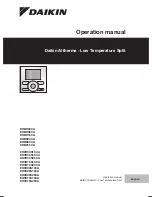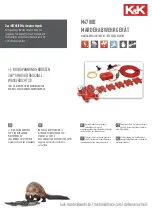
EQJW146F002 EN
127
Electrical connection
− Inductances in the control cabinet, e.g. contactor coils, are to be equipped with suitable
interference suppressors (RC elements).
− Control cabinet elements with high field strength, e.g. transformers or frequency convert-
ers, must be shielded with separators providing a good ground connection.
Overvoltage protection
− If signal lines are installed outside buildings or over large distances, make sure appropri-
ate surge or overvoltage protection measures are taken. Such measures are indispens-
able for bus lines.
− The shield of signal lines installed outside buildings must have current conducting capaci-
ty and must be grounded on both sides.
− Surge diverters must be installed at the control cabinet inlet.
Connecting the controller
Wall mounting
To connect the wiring, pull the controller out of its base. To connect the feeding cables, break
through the holes in the marked locations at the top or bottom at the base housing and fit
supplied grommets or suitable cable glands. Ensure that the cables are not subject to torsion
or bending by taking suitable precautions before inserting the cable.
The controller is connected as illustrated in the following wiring diagrams.
Open the housing to connect the cables. To connect the feeding cables, make holes in the
marked locations at the top, bottom or back of the base of the housing and fit suitable grom-
mets or cable glands.
Connecting sensors
Cables with a minimum cross-section of 2 x 0.5 mm² can be connected to the terminals at
the base of the housing.
Connecting actuators
− 0 to 10 V control output: Use cables with a minimum cross-section of 2 x 0.5 mm².
− Three-step or on/off outputs: Connect cables with at least 1.5 mm² suitable for damp lo-
cations to the terminals of the controller output. The direction of travel needs to be
checked at start-up.
Connecting pumps
Connect all cables with at least 1.5 mm² to the terminals of the controller as illustrated in the
wiring diagram.
















































